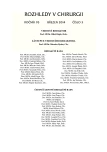Injury of the extensor mechanism in the zone I – mallet deformity
Authors:
D. Oravcová
Authors‘ workplace:
Oddělení plastické chirurgie, Krajská nemocnice T. Bati, a. s., Zlín
poverená vedením oddelenia: MUDr. B. Vozárová
Published in:
Rozhl. Chir., 2014, roč. 93, č. 3, s. 117-122.
Category:
Review
Overview
Mallet finger is deformity of the extensor mechanism in the zone I, which is frequently encountered at surgical outpatientęs – departments. Active extension of distal phalanx is impossible. These injuries ranging from disruption of the extensor mechanism alone without skin disruption, with skin disruption to those that have articular involvement and subluxation of distal interphalangeal joint. The management of mallet finger injuries depends on injury pattern and includes splinting, closed reduction, percutaneous pinning with Kirschner wire, open reduction and internal fixation of extensor mechanism or bone abruptions. Non treated mallet deformity can result in chronic form, when specific therapy is needed. Correctly identified acute injury and immediate therapy can increase a possibility to complete restoration of full range of motion.
This paper is focused on therapeuthic principles and aftercare of closed, open and chronic injuries of extensor mechanism in the zone I.
Key words:
mallet deformity – closed – open - chronic – principles of treatment
Sources
1. Bidic SM, Schaub T. Extensor tendons. In: Selected readings in plastic surgery. Dallas, Selected Readings in Plastic Surgery Inc. 2009;10,26 : 1–23.
2. Tubiana, R, Gillbert A, Masquelet AC. Extensor tendons. In: Tubiana R, Gillbert A, Masquelet AC. An atlas of surgical techniques of the hand and wrist. 1. vyd. London, Informa Healthcare 1999 : 254–278.
3. Baratz ME, Schmidt CC, Hughes TB. Extensor tendon injuries. In: Green DP, Hotchkiss RN, Pederson WC, et al. Green‘s operative hand surgery. 5. ed. 1. vol. Philadelphia, Elsevier 2005 : 187–218.
4. Hellmuth T, Schmoranzová A, Sukop A, Dráč P. Extenzory. In: Sukop A, et al. Akutní poranění ruky. 1. vyd. Praha, Galén 2013 : 73?78.
5. Schmidt B, Weinberg A, Friedrich H. The mallet finger in children and adolescents. Handchir Mikrochir Plast Chir 2008;40,3 : 149–152.
6. Slodička R. Poranění šlachového systému. In: Pilný J, Slodička R, et al. Chirurgie ruky. 1. vyd. Praha, Grada Publishing 2011 : 294–297, 308.
7. Asghar M, Helm RH. Central slip tenotomy for chronic mallet finger. Surgeon 2013;11, 5 : 264 –266.
8. Bates SJ, Chang J. Repair of the extensor tendon system. In: Grabb WC, Smith JW. Plastic surgery [CD-ROM]. 6. vyd. Philadelphia, Lippincott Williams & Wilkins 2006 : 16.
9. Carlson MG. Cerebral palsy. In: Green DP, Hotchkiss RN, Pederson WC, et al. Green‘s operative hand surgery. 5. ed. 2. vol. Philadelphia, Elsevier 2005 : 1232–1233.
10. Suh N, Wolfe SW. Soft tissue mallet finger injuries with delayed treatment. J Hand Surg [Am] 2013;38,9 : 1803–1805.
11. Kleinman WB, Petersen DP. Oblique retinacular ligament reconstruction for chronic mallet finger deformity. J Hand Surg [Am] 1984;9 : 399–404.
Labels
Surgery Orthopaedics Trauma surgeryArticle was published in
Perspectives in Surgery

2014 Issue 3
- Metamizole at a Glance and in Practice – Effective Non-Opioid Analgesic for All Ages
- Metamizole in perioperative treatment in children under 14 years – results of a questionnaire survey from practice
- Possibilities of Using Metamizole in the Treatment of Acute Primary Headaches
Most read in this issue
- Lymphatic metastasizing – viewed by pathologist
- Pathologic fluid collection of mesentery, differential diagnosis of mesenteric cysts – case report
- Transtibial amputation: sagittal flaps in patients with diabetic foot syndrome
- Injury of the extensor mechanism in the zone I – mallet deformity
